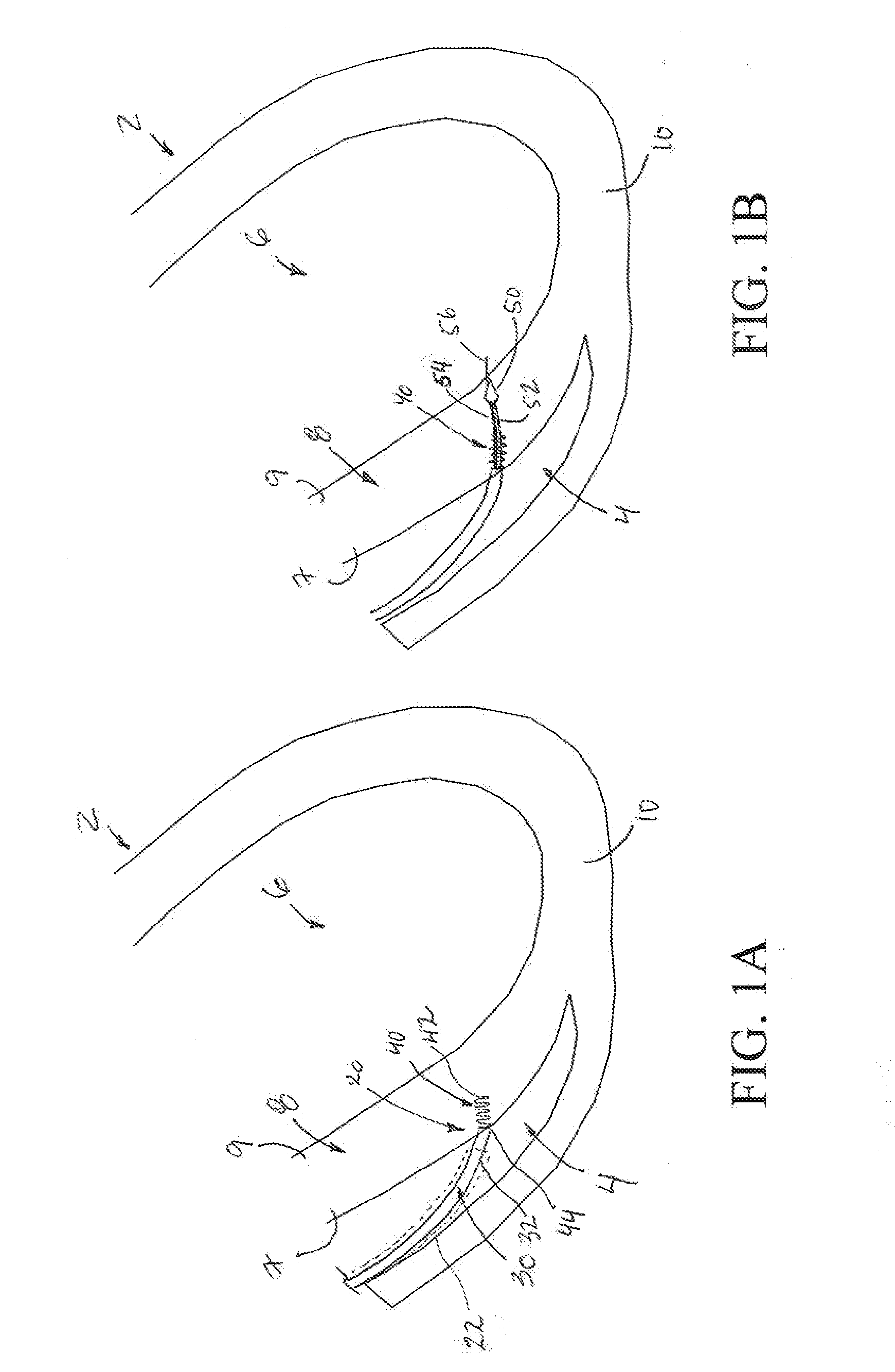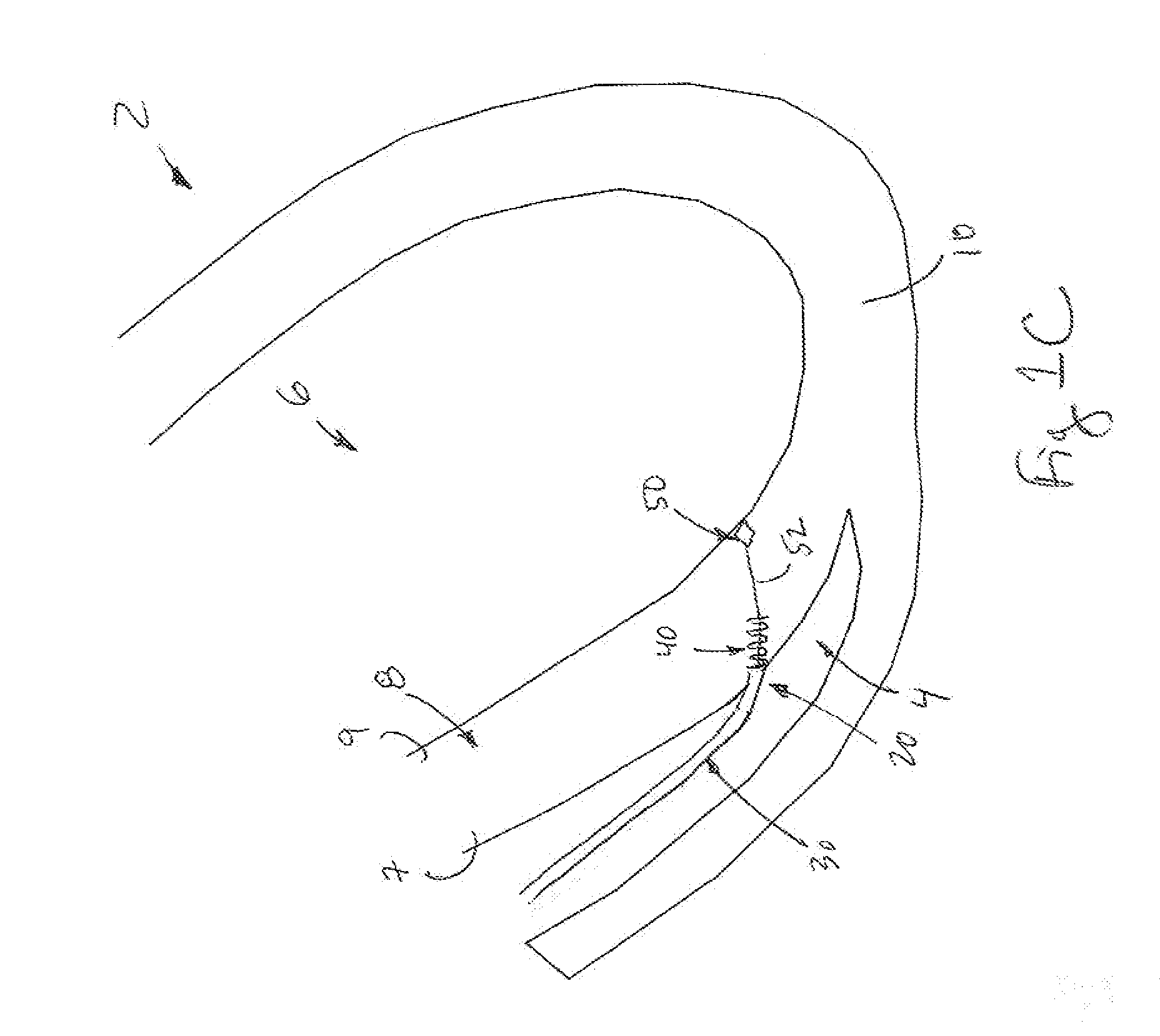Transmuscular left ventricular cardiac stimulation leads and related systems and methods
a left ventricle and cardiac stimulation technology, applied in the field of system and method of heart stimulation, can solve the problems of difficult to position electrodes, difficult to stimulate the left ventricle, and difficult to deliver, so as to improve the contractility of at least the left ventricl
- Summary
- Abstract
- Description
- Claims
- Application Information
AI Technical Summary
Benefits of technology
Problems solved by technology
Method used
Image
Examples
example 1
[0136]The present example is premised at least in part upon the hypothesis that left ventricular pacing is useful for treatment of LV dysfunction in patients with a wide QRS. Disadvantages of LV pacing via the coronary sinus, the prevalent current adopted approach, include without limitation: inability to cannulate the CS; high capture thresholds; phrenic nerve stimulation; pacing sites limited by tributary anatomy; and epicardial-endocardial activation sequence. Accordingly, it is believed that pacing the LV via the endocardial wall on the left side of the interventricular septum via transseptal delivery from the RV would present significant advantage for LV pacing in many cases, and present improved Hemodynamics versus RV pacing, and / or versus LV pacing via coronary sinus LV lead placement. Moreover, biventricular pacing is believed to benefit from LV stimulation in the sub-endocardial septal location via electrodes delivered in the transseptal approach from the RV.
[0137]FIGS. 13A...
PUM
 Login to View More
Login to View More Abstract
Description
Claims
Application Information
 Login to View More
Login to View More - R&D
- Intellectual Property
- Life Sciences
- Materials
- Tech Scout
- Unparalleled Data Quality
- Higher Quality Content
- 60% Fewer Hallucinations
Browse by: Latest US Patents, China's latest patents, Technical Efficacy Thesaurus, Application Domain, Technology Topic, Popular Technical Reports.
© 2025 PatSnap. All rights reserved.Legal|Privacy policy|Modern Slavery Act Transparency Statement|Sitemap|About US| Contact US: help@patsnap.com



